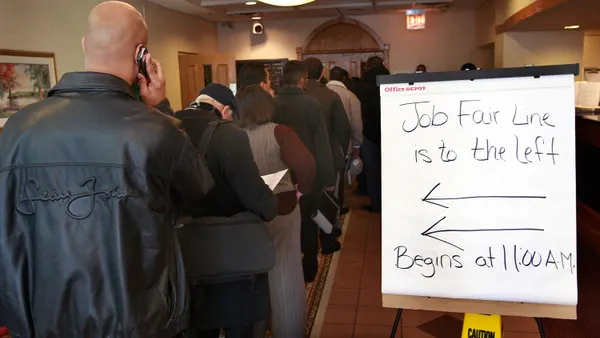Greg Alvo is founder and CEO of Ordergroove. Views are the author's own.
It’s become common for consumers to shop a brand once, and then wander off to Amazon or another competitor for future purchases. When this happens, the upfront cost of customer acquisition (CAC) is shouldered by the retailer without getting any benefit from the long-term customer value (LTV) that comes from subsequent purchases.
Subscription services have long been seen as a promising solution to this problem. Not only do they increase retention, but anecdotal evidence suggests subscribers typically spend more with a retailer than nonsubscribers. A recent survey agreed with that: 83% of retail leaders said converting one-and-done buyers into recurring customers is very important for their overall retail strategy.
Given findings like that, it’s not surprising CFOs are giving subscriptions a hard look, and evaluating whether it’s a strategy that can help with customer retention.
Too much given away?
Questions have loomed, though, about whether these services are worth the cost; many subscriptions include free shipping and discounts, among other incentives, that can affect the bottom line. At the same time, it can be a challenge to determine if these programs drive incremental sales or end up cannibalizing existing revenue channels. It’s also a challenge to tell if subscription customers wouldn’t have spent the same amount anyway — without a subscription or reorder experience.
To understand the situation better, our data science team conducted a study analyzing consumer purchase behavior to see if a difference can be observed between subscribers and nonsubscribers. The study tracked customer cohorts (from the “unengaged spender” to the “super loyal”) across 18 months of behavior, including the six months leading up to and following signing up for the subscription program.
Across this sample of clients' data, involving millions of transactions, we found an increase in customer spend in all cases, and in most cases, an increase of 60% or more over the six months following enrollment.
Even more compelling was the degree of incremental spend by customer cohort. Typically, the less engaged customer had a greater percentage change in behavior compared with the more engaged customer. Just as significantly, we saw a significant increase by all customer groups.
The benefit is even more significant for retailers who are able to fine-tune their subscription programs. Companies that follow best practice recommendations saw a fourfold improvement in revenue growth.
One of the most interesting takeaways for me is how subscriptions are taking hold and driving significant recurring revenue across industries.
In our study, regardless of segment — whether it’s beauty, health and wellness, or beverage, among others — subscription customers spend more incrementally. Previously, it was thought that subscriptions were only a viable revenue opportunity for software-as-a-service (SaaS) companies. That is no longer the case, the findings show, since consumer demand for personalized and frictionless experiences stretches far beyond that category into clothing, furniture and consumer electronics.
What’s more, although the analysis we conducted was specific to individual consumers, it's likely that there would be a similar effect for business-to-business subscriptions.
Not all subscription programs are created equal. The programs that we see being most successful put the customer at the center. When the experience is tailored and the service is convenient, customers are willing to spend more.
In one case, after launching an omnichannel subscription program, one company saw a 57% increase in incremental purchases from consumers who enrolled in the program for three months, and an almost 90% increase from people stayed with the program for six months.
By making it easy for customers to shop when and how they want, the retailer formed a deeper relationship that established a level of commitment that kept people coming back.
As we look ahead to the next decade and consumers seek a more personalized experience, I expect we will see more signs that relationship commerce programs like subscriptions become more important, creating significant revenue opportunity for your company.











